How to bench bleed hydraulic valve lifters
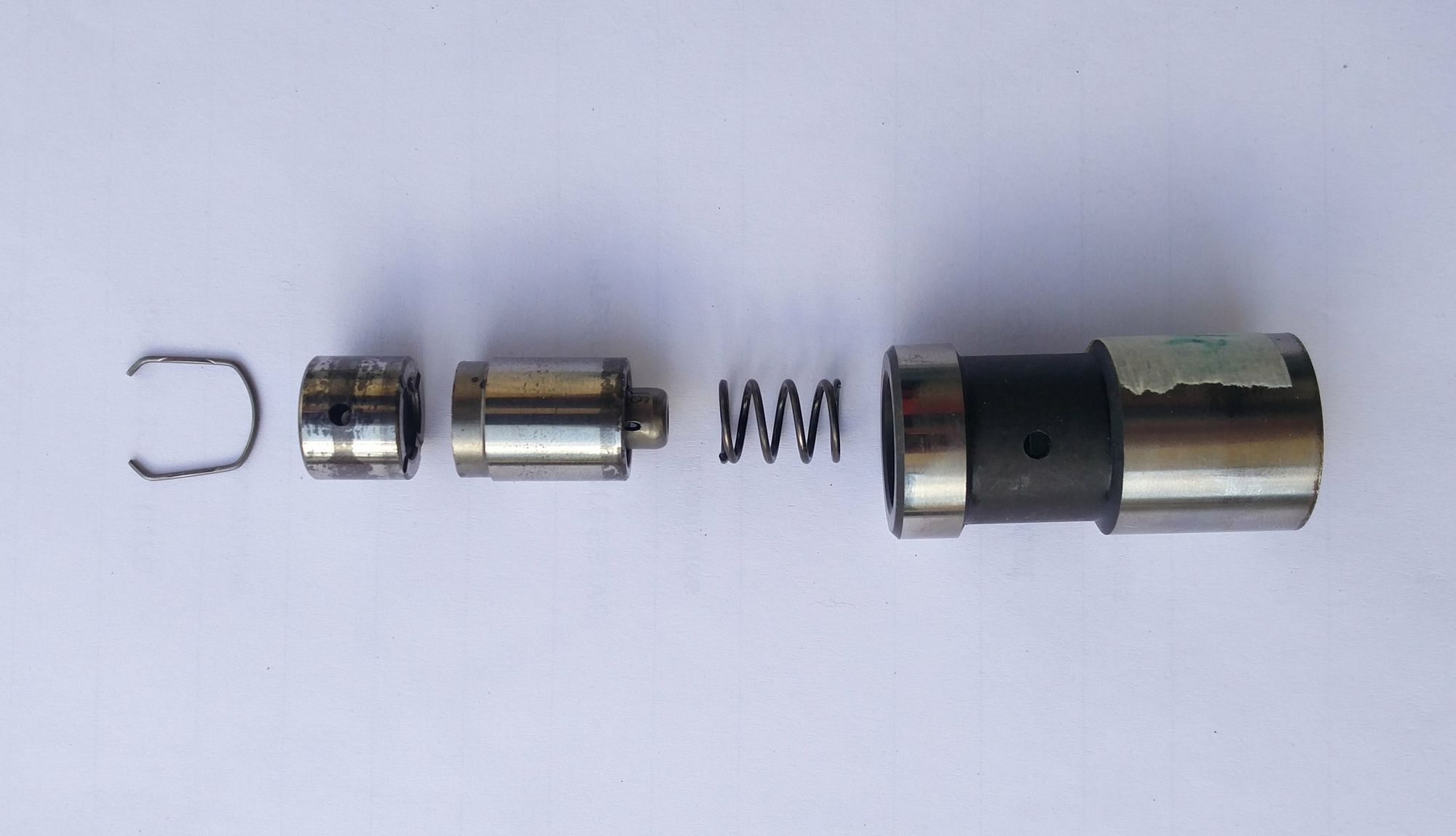
A quick guide on removing air from hydraulic valve lifters (bleeding), such as those used on the fuel-injected VW Type 2 bus.
Why do hydraulic lifters need bleeding?
The main goal is to ensure that before installation, hydraulic lifters are properly filled with oil and oil only. By bleeding them, unwanted air is removed from the lifters.
The uncompressible oil content in their pressure chamber is what makes them effectively work as solid lifters during operation. If air (compressible gas) comes in, the mixture will create a compressible cushion in the pressure chamber. As a result, the lifters will be springy and will no longer act as solid ones. If the lifters are fully functional, they should eventually refill/bleed while driving the bus automatically, but it might take a while and they will be noisier until then.
💡 You can easily test if some air (or actually only air) is present in a hydraulic lifter. Simply push on the pushrod socket underneath the lock ring with your thumb. If you can depress it, it needs bleeding out the air inside. If you cannot depress it, then the lifter is fine.
This is not an essential maintenance procedure, though. In fact, you can bleed the lifters on the vehicle. There are multiple sources with instructions on how to do it (that ratwell article is one for instance), but it's beyond the scope of this guide. Bench bleeding lifters will help you with setting their preload when adjusting the valves, as you will be able to better feel the point of solid contact with the pushrod. Empty or partially air-filled lifters will have a spongy contact point, which generally requires more experience to find.
Also, it's never a bad idea to clean them up after 40 years of use.
How they're put together
Here are some diagrams to understand the different parts of a lifter and how they are assembled:
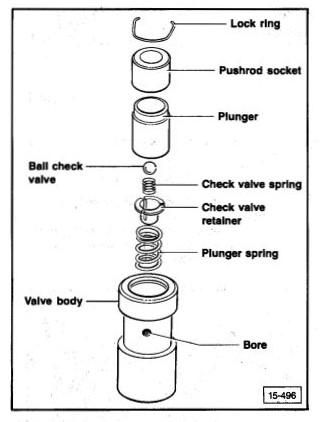
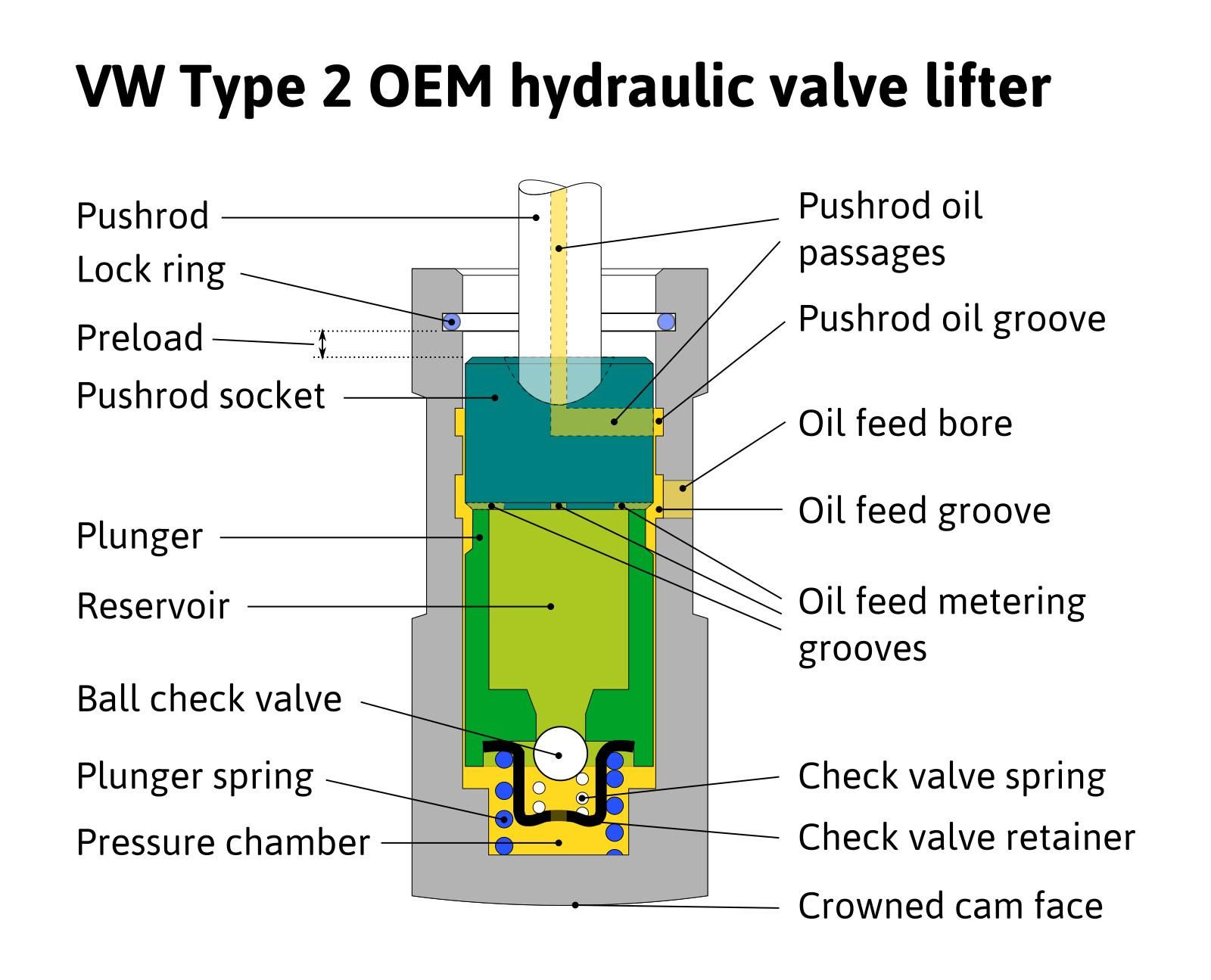
Notice that:
- the plunger and pushrod socket do not actually contact the lifter body. It's a precision fit that allows for controlled oil bleeding and enables the self-adjusting function of the lifter;
- the pushrod oil passage is exclusively fed by oil bleeding. That surprised me, as I thought a mechanism that allowed more oil flow would be needed. That's a topic for another thread though;
- the pressure chamber is refilled via the four oil feed metering grooves on the pushrod socket, when the ball check valve is open.
And my actual lifters, disassembled. Notice that the ball check valve is part of the plunger assembly. There is no need to take it apart. Also notice the oil metering grooves at the base of the pushrod socket.
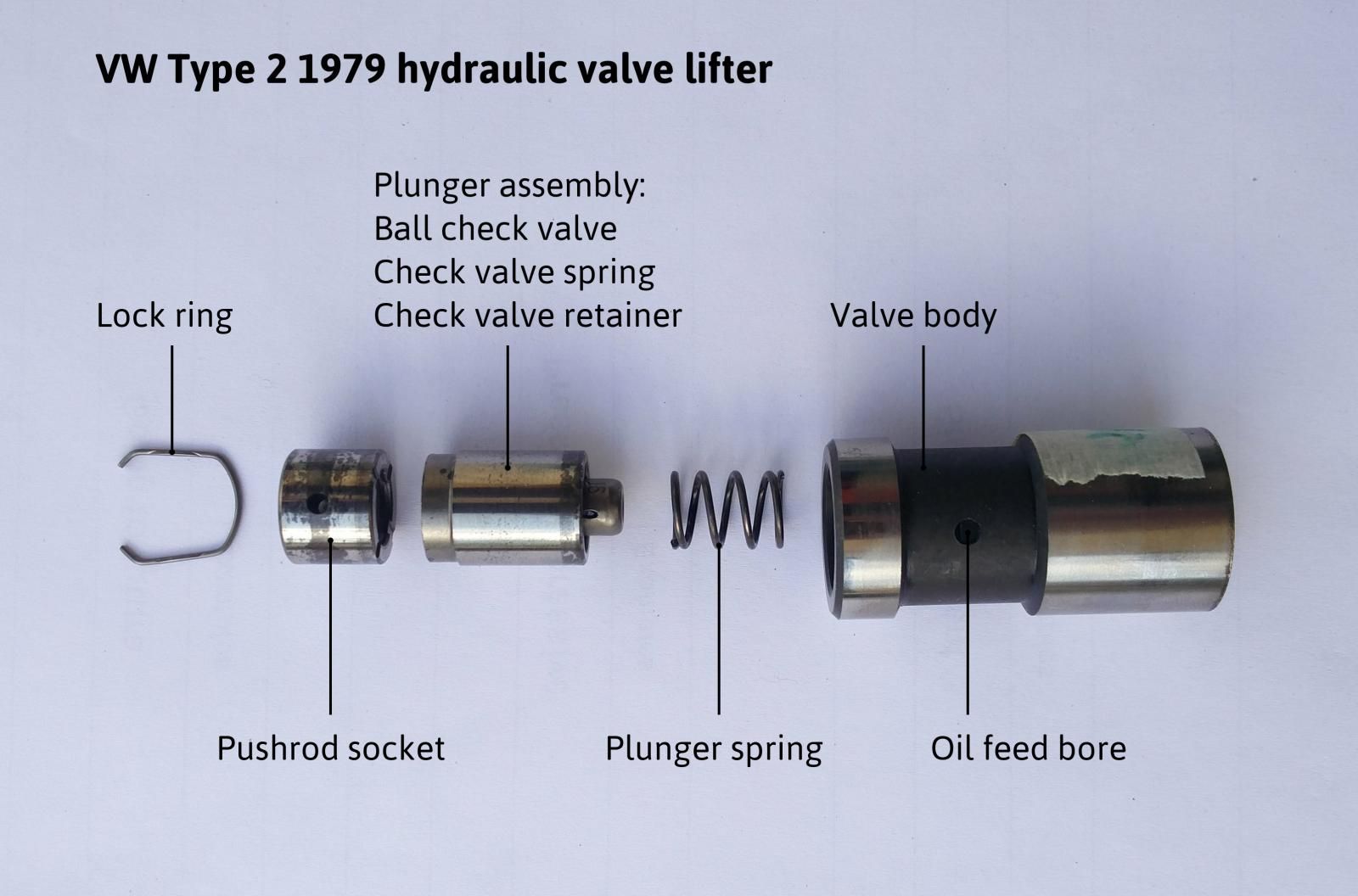
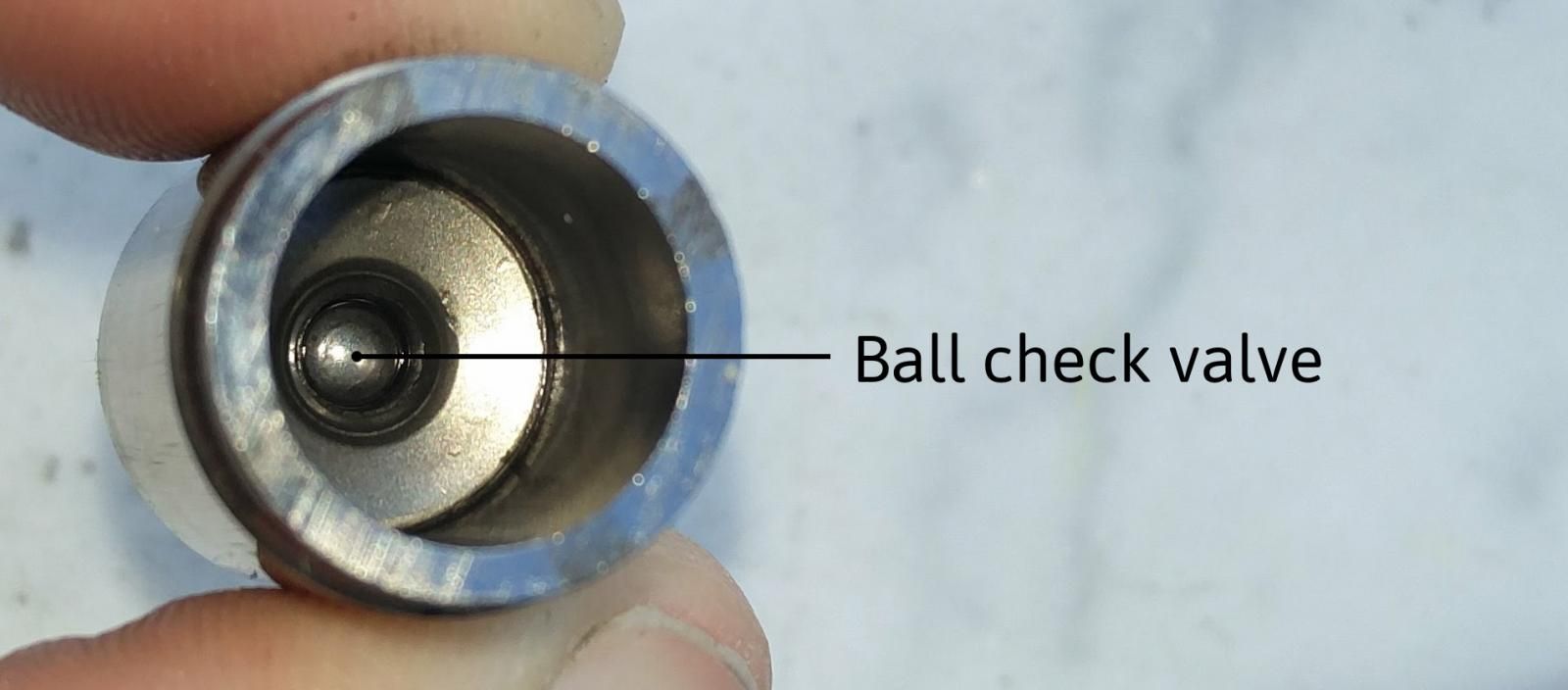
The tools

- Bench vise
- Tweezers
- Engine oil
- Hydraulic valve lifter to bleed
- Hardwood dowel
Tweezers – Use your choice of tool instead of tweezers if you will. The reason I like them is that they let me remove the lock ring, extract the plunger and push the ball check valve when either removing or inserting the plunger. All in one tool.
Dowel – The Bentley manual recommends using an old valve guide or sawn-off pushrod to push the socket back in place to insert the lock ring while on the vise. I did not have an old pushrod laying around, and even then, I doubt I would have sacrificed it unless it were bent. A hardwood dowel (e.g. beech or oak) does the job just fine and it's easier to saw. Just make sure that it is long enough to give you room to insert the lock ring while on the vise, but short enough not to snap out of the vise. You can use a pencil sharpener to thin and round the end that goes into the socket for a better fit. Also, if I were to do this often, I would probably fabricate a small base for the dowel for it to be perpendicular and have better stability on the vise.
Engine oil – I used a small bottle with a pipette. Not strictly necessary. I used it more for the fact that there is less chance of oil spilling than with a big container. However, the pipette proved quite useful for precisely filling up to the bleed hole.
The procedure
- Pry out the lock ring
- Remove pushrod socket, plunger assembly and plunger spring
👉 While you are at it, do clean the lifter with your solvent of choice. Small particles of metal like to collect at the bottom of the pressure chamber, the ball check valve can also stick with varnish.
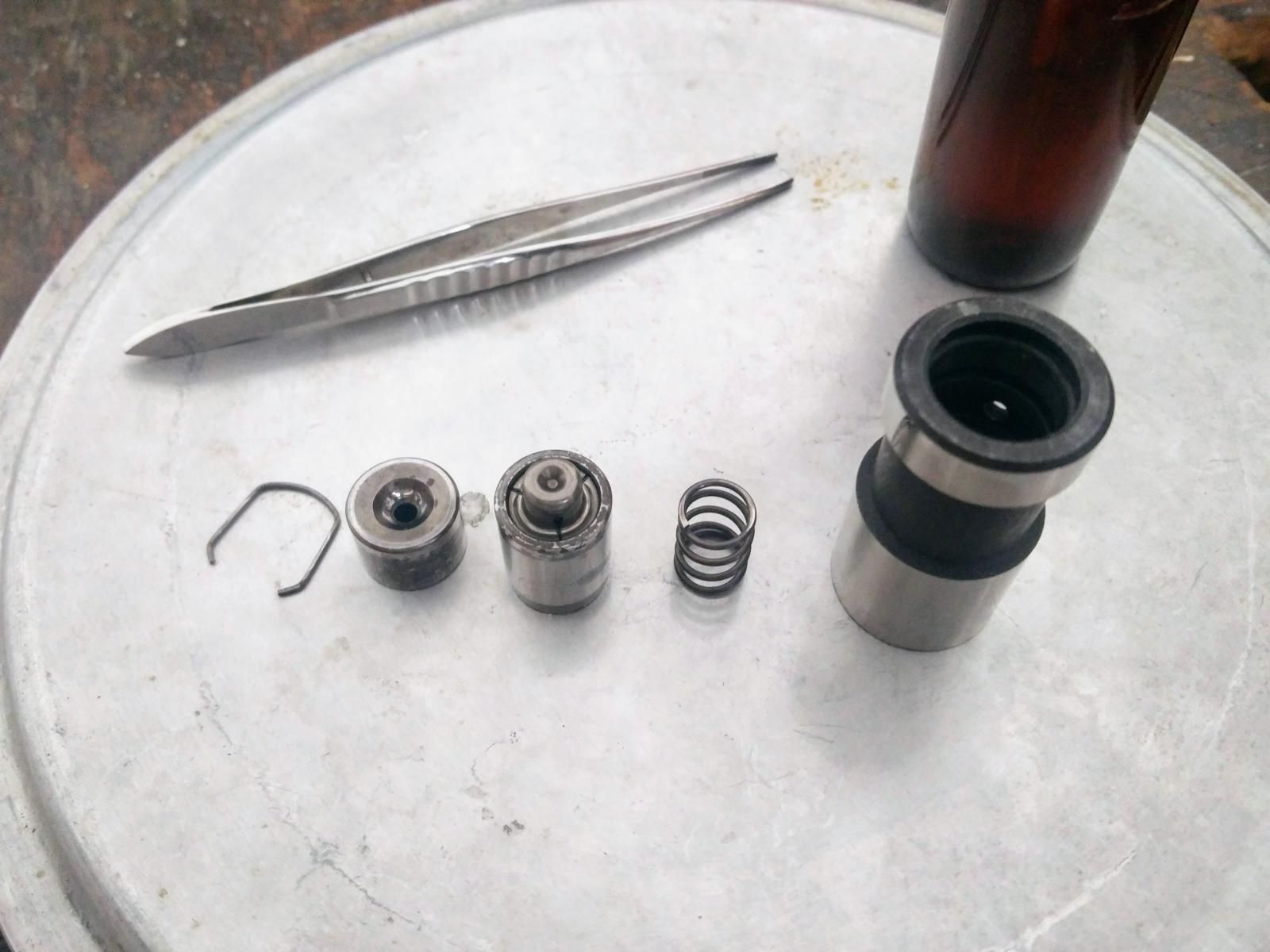
- Fill valve lifter body with oil up to bleed hole
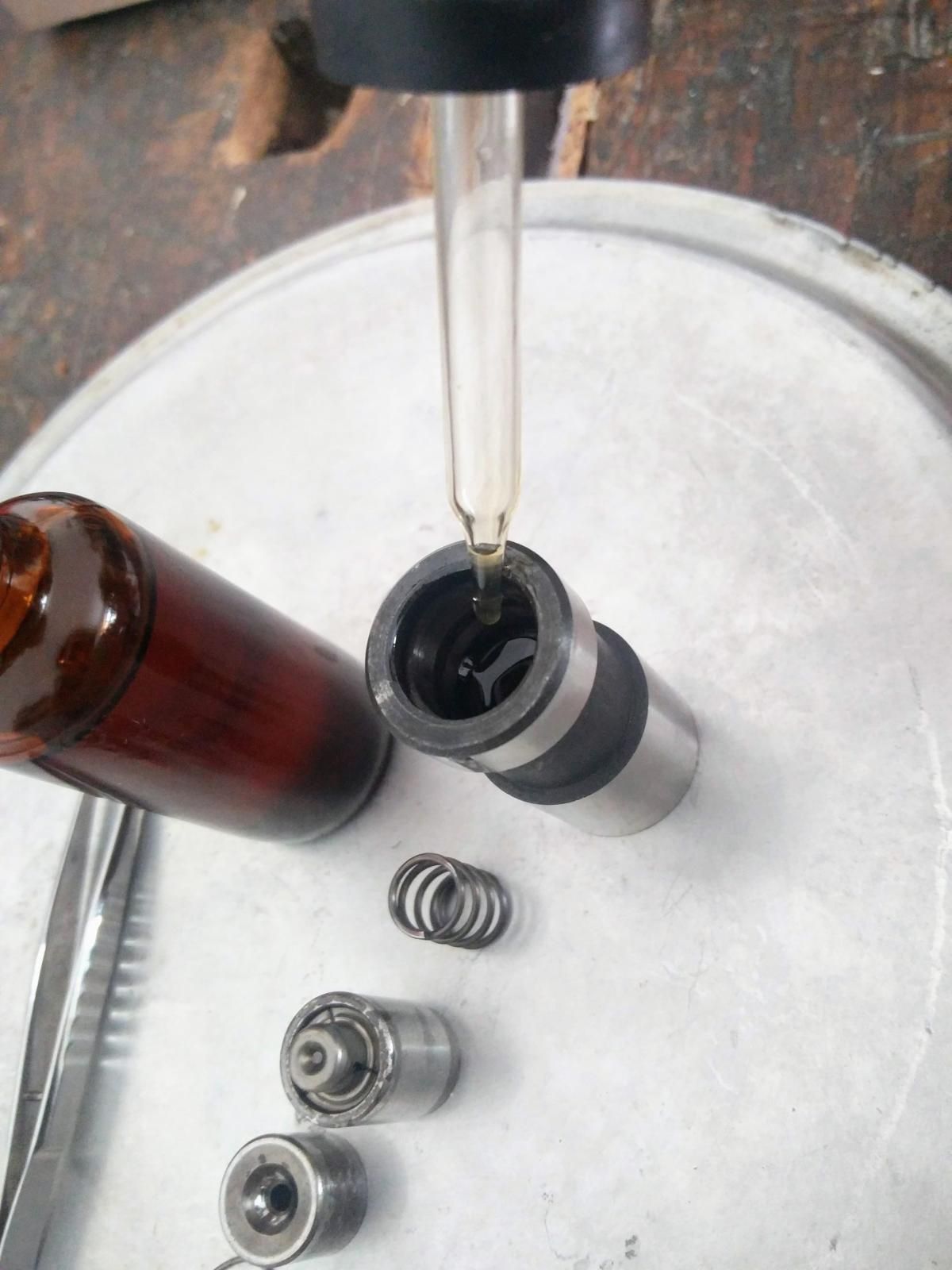
- Insert plunger spring
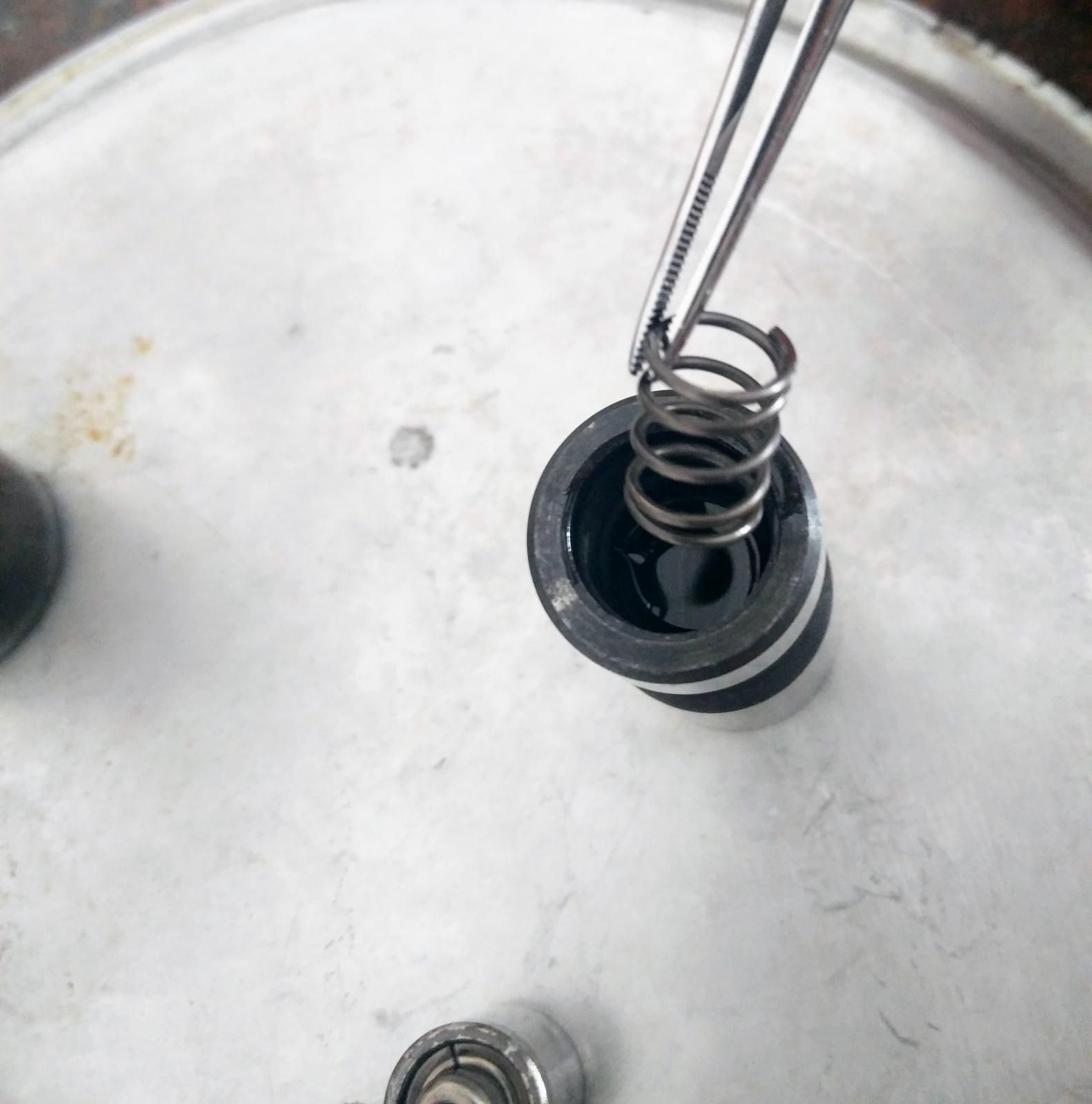
- Install plunger assembly and push downward; at the same time, open ball check valve with scribe
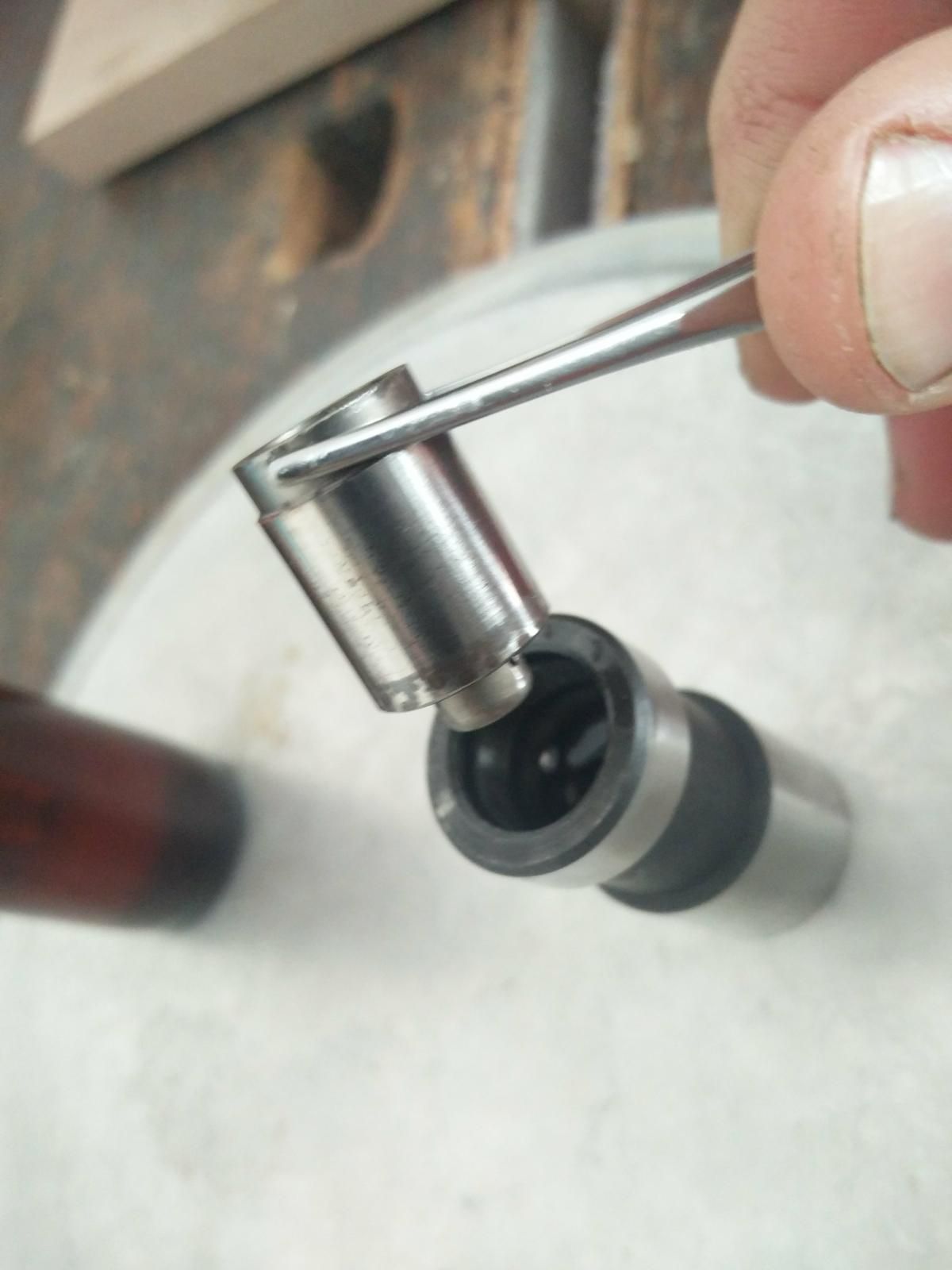
👉 Notice oil starting to bleed out of the hole in the lifter body. Keep pushing downward until you meet some resistance. This will generally coincide with the plunger top just starting to be submerged.
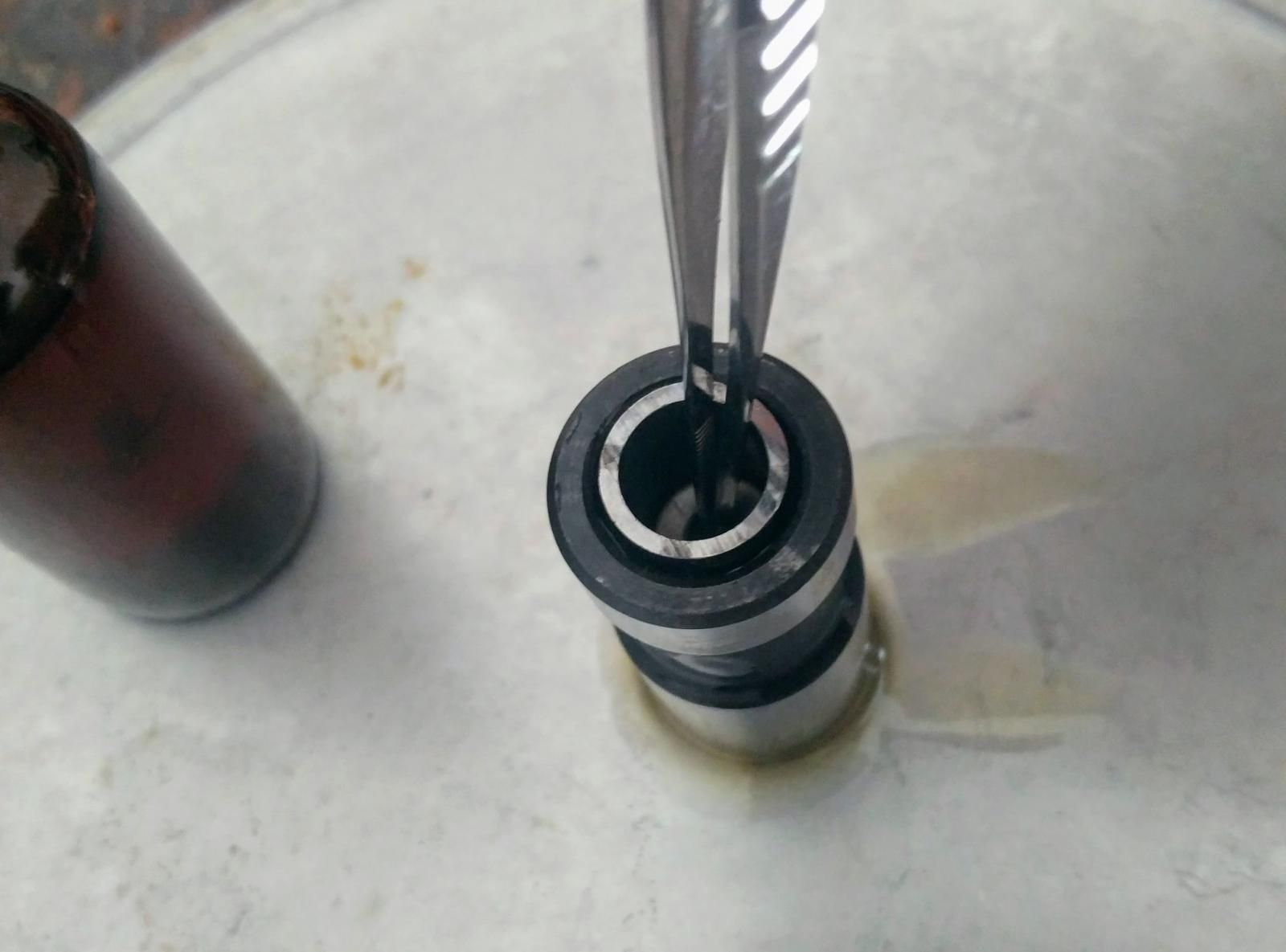
- Insert pushrod in socket and slowly press together in vise (bore must face upward) until lock ring can be installed.
👉 Notice how the socket will protrude a bit, as you cannot push it further down with your fingers. That's what the vise will be for.
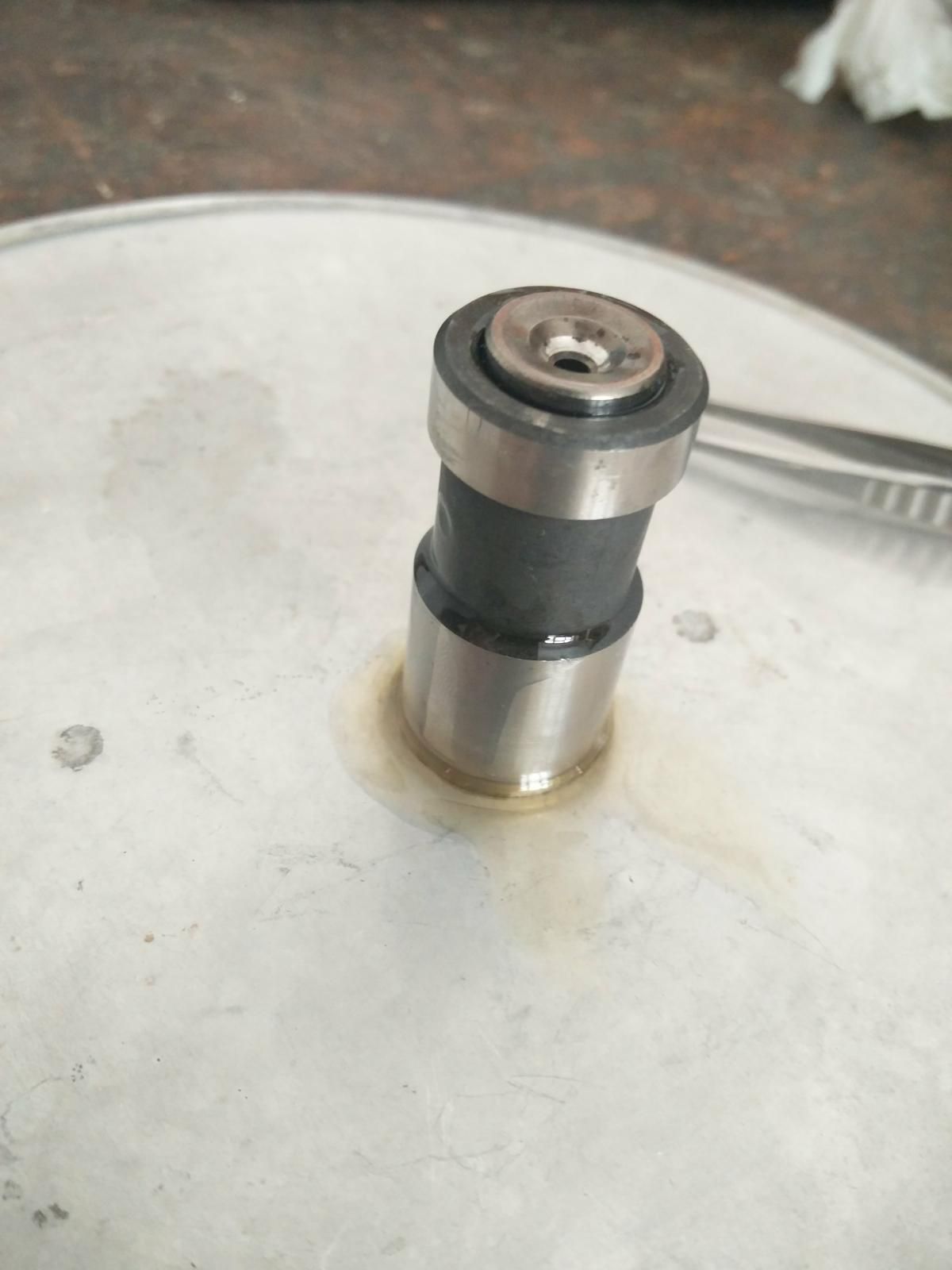
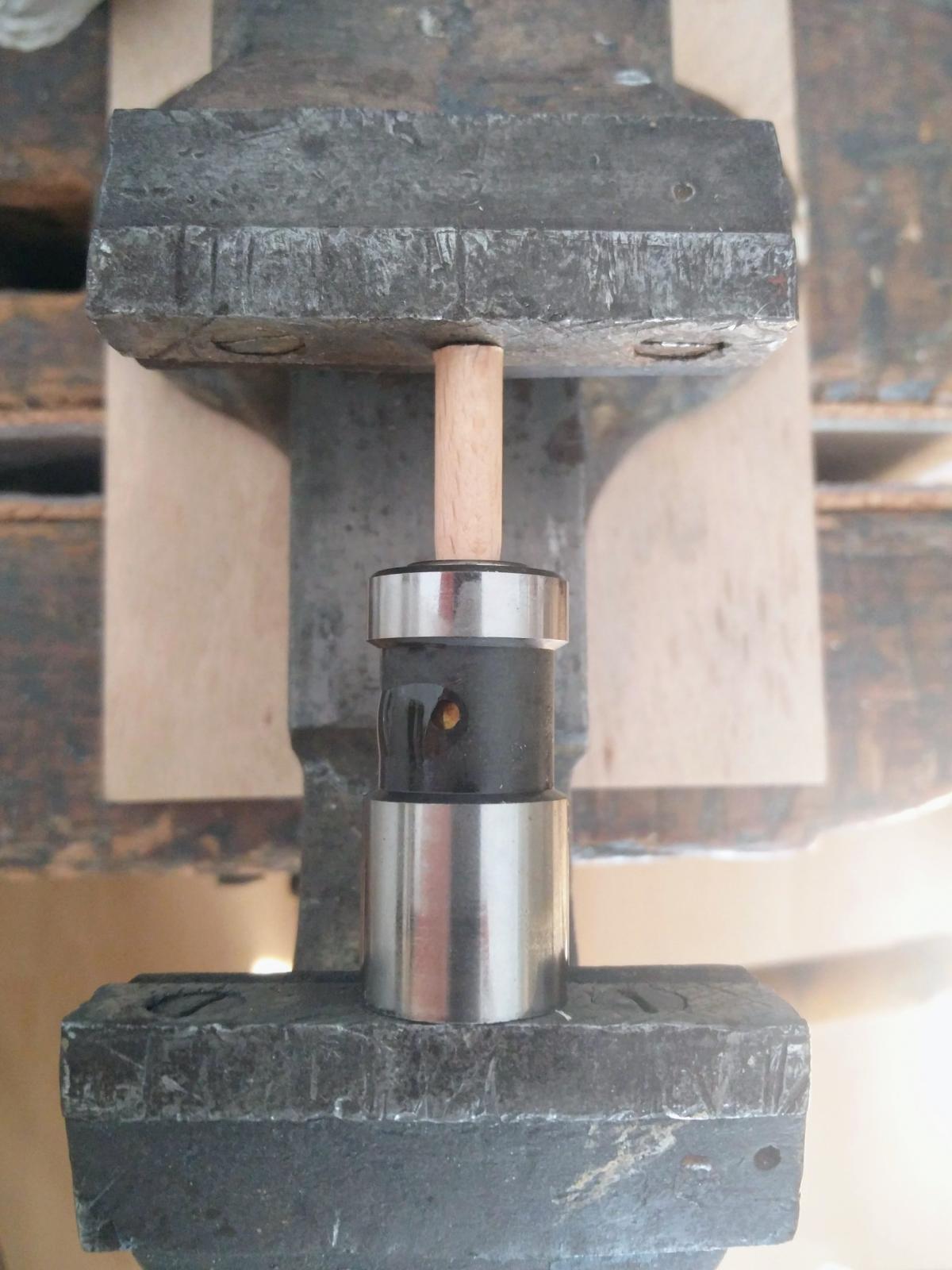
👉 Make sure the dowel is truly perpendicular to the lifter and the vise grip. Really, check it out. If it's not, both dowel and lifter might snap out of the vise under pressure. You don't want to damage the lifter, or most importantly, yourself.
💡 Notice how oil is seeping out of the bleed/feed hole as you push. I'd recommend pressing slowly, waiting for oil to come out a bit, then cleaning up, then turning the vise again.
💡 Oil will also seep out from the top of the pushrod socket. Remember controlled bleeding is also happening there to send oil up the hollow pushrod. As our pushrod substitute here is not hollow, oil will escape through the sides of the socket, as the oil has nowhere else to go to otherwise.
💡 You are effectively doing the same action as when adjusting the lifter's preload on the bus. Only that here you will go as far as the lock ring groove, not further.
- Install lock ring
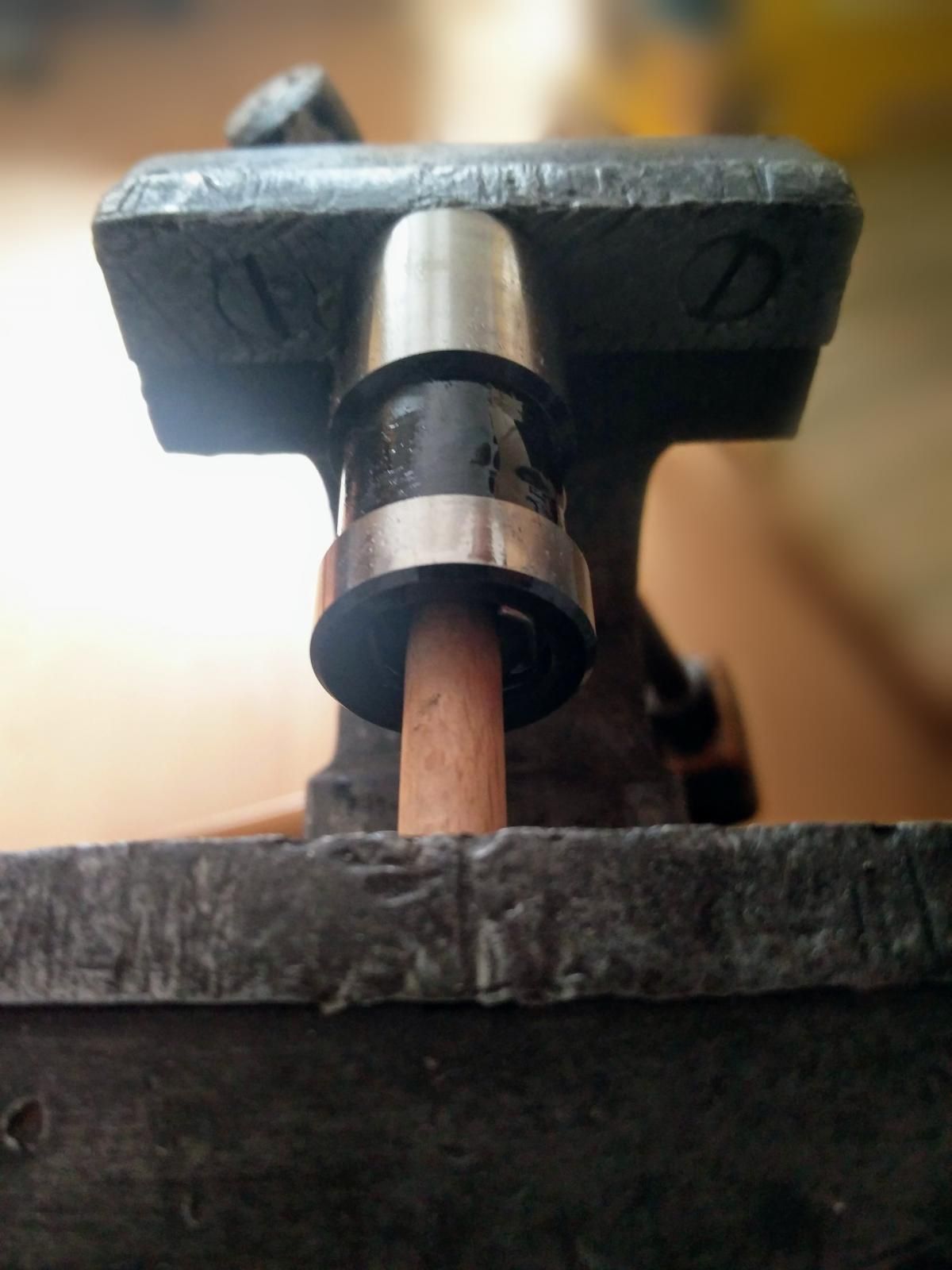
8. You're done
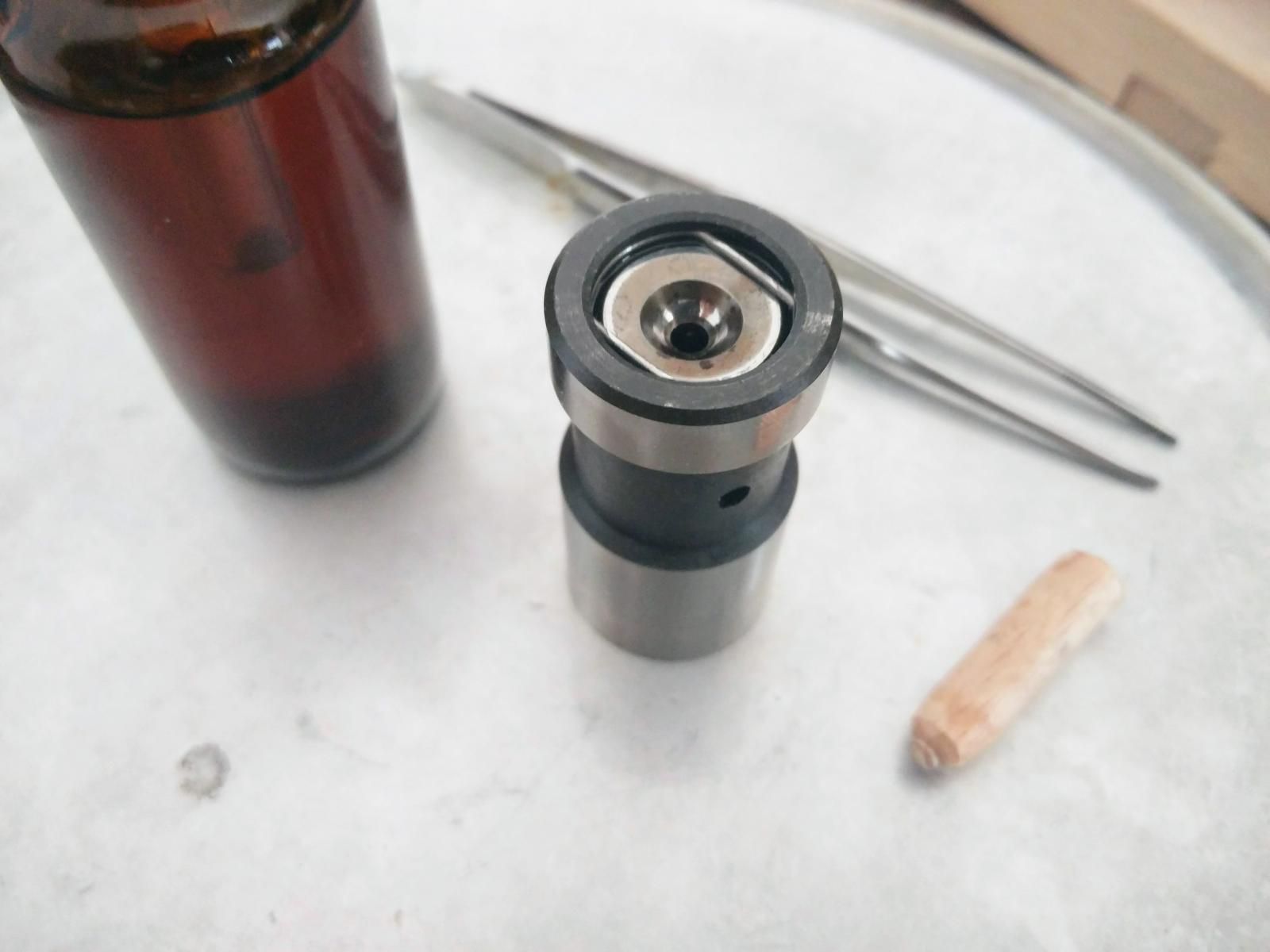
Reference
- Hydraulic lifters by Richard Atwell, for Vanagon lifters
- Bleeding and cleaning hydraulic lifters by Christopher Schimke, for Vanagon lifters
- Adjusting hydraulic lifters after a rebuild
The motivation for this guide was to provide easy, step-by-step instructions for the procedure, specific to the Type 2 bus.
Other than the fact that there was no such written material, there seemed to be some confusion about the procedure, particularly because:
- Richard Atwell has an extensive and excellent article about hydraulic lifters, but it does not mention the manual bleeding procedure. It also shows lifters with a different design than the ones used in 78-79 buses.
- The Type 2 (Bay Window) Bentley manual describes a procedure that is fairly cumbersome, involving submerging the lifters in oil and using a press, which most hobbyists will not have.
Reportedly, the Waterboxer Vanagon Bentley Manual instructions were easier to follow and make more sense than the Bay Window Bentley ones. I tried them, and they worked beautifully. This guide is the result of using that method specifically for the hydraulic valve lifters used in the late bus Type 4 engine.